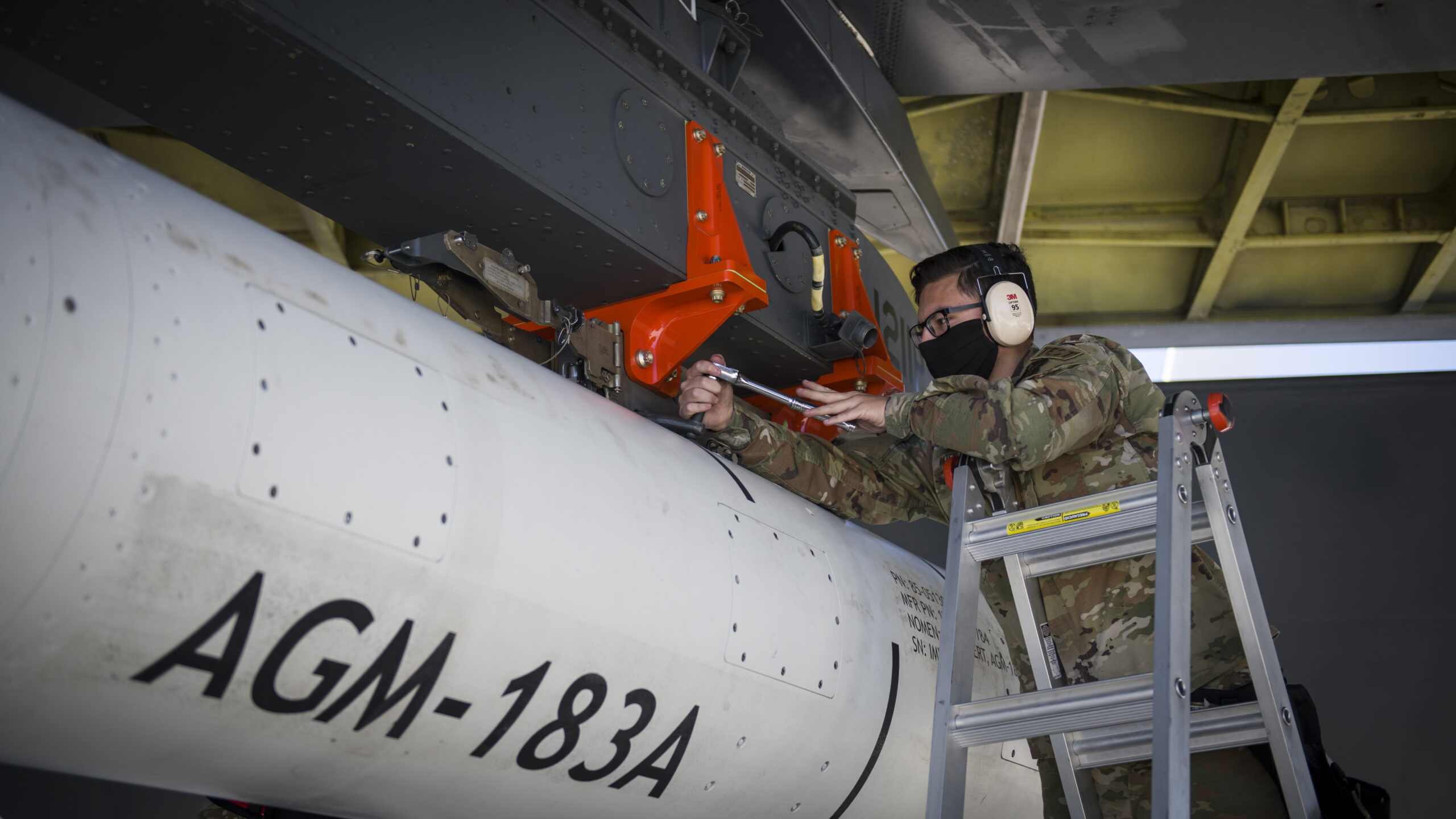
Staff Sgt. Jacob Puente, 912th Aircraft Maintenance Squadron, secures the AGM-183A Air-launched Rapid Response Weapon Instrumented Measurement Vehicle 1 as it is loaded under the wing of a B-52H Stratofortress at Edwards Air Force Base, California, Aug. 6. (Air Force/Giancarlo Casem)
WASHINGTON: A recent booster flight test of the Air Force’s flagship hypersonic missile has failed for the third time, the service announced Dec. 20.
During a Dec. 15 flight test, the Air Force attempted to launch an AGM-183A Air-Launched Rapid Response Weapon (ARRW) booster from a B-52 bomber, but an “unknown issue” caused the launch sequence to be aborted before the booster was released, the service said in a statement.
“The missile will return to the factory and analysis of the telemetry and onboard data will begin immediately,” the Air Force said. “The program will seek to resume flight test as quickly as possible.”
This latest test, which was first reported by The War Zone, marks the third time the Air Force has attempted to conduct a booster test of the Lockheed Martin-made missile. A July 28 test failed after ARRW’s engine did not ignite after launch, while an April 5 test failed when the missile was not able to complete its launch sequence.
The Air Force hopes to spend $161 million to buy the first 12 ARRW missiles in FY22, but a spokeswoman for the service could not immediately confirm whether the failed test would scuttle plans to begin production this fiscal year.
Gen. Health Collins, the Air Force’s program executive for weapons, told Defense News in September that so long as ARRW could complete a successful flight test by the end of 2021, there would be enough margin in the schedule to begin production in FY22.
If not resolved, the issue could have profound implications for the Air Force’s hypersonic program. Air Force Secretary Frank Kendall indicated that he has some reservations about the service’s hypersonic weapons efforts, raising speculation that he could try to radically reshape existing plans.
“I’m not satisfied with the pace,” he said in September. “We’re making some progress on the technology; I would like to see it be better.”
“The target set that we would want to address, and why hypersonics are the most cost effective weapons for the US, I think it’s still, to me, somewhat of a question mark,” he added. “I haven’t seen all the analysis that’s been done to justify the current program.”
Move over FARA: General Atomics pitching new Gray Eagle version for armed scout mission
General Atomics will also showcase its Mojave demonstrator for the first time during the Army Aviation Association of America conference in Denver, a company spokesman said.


























